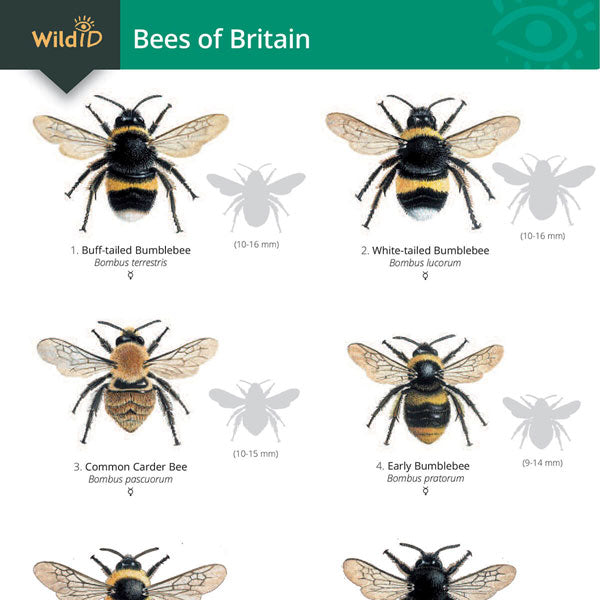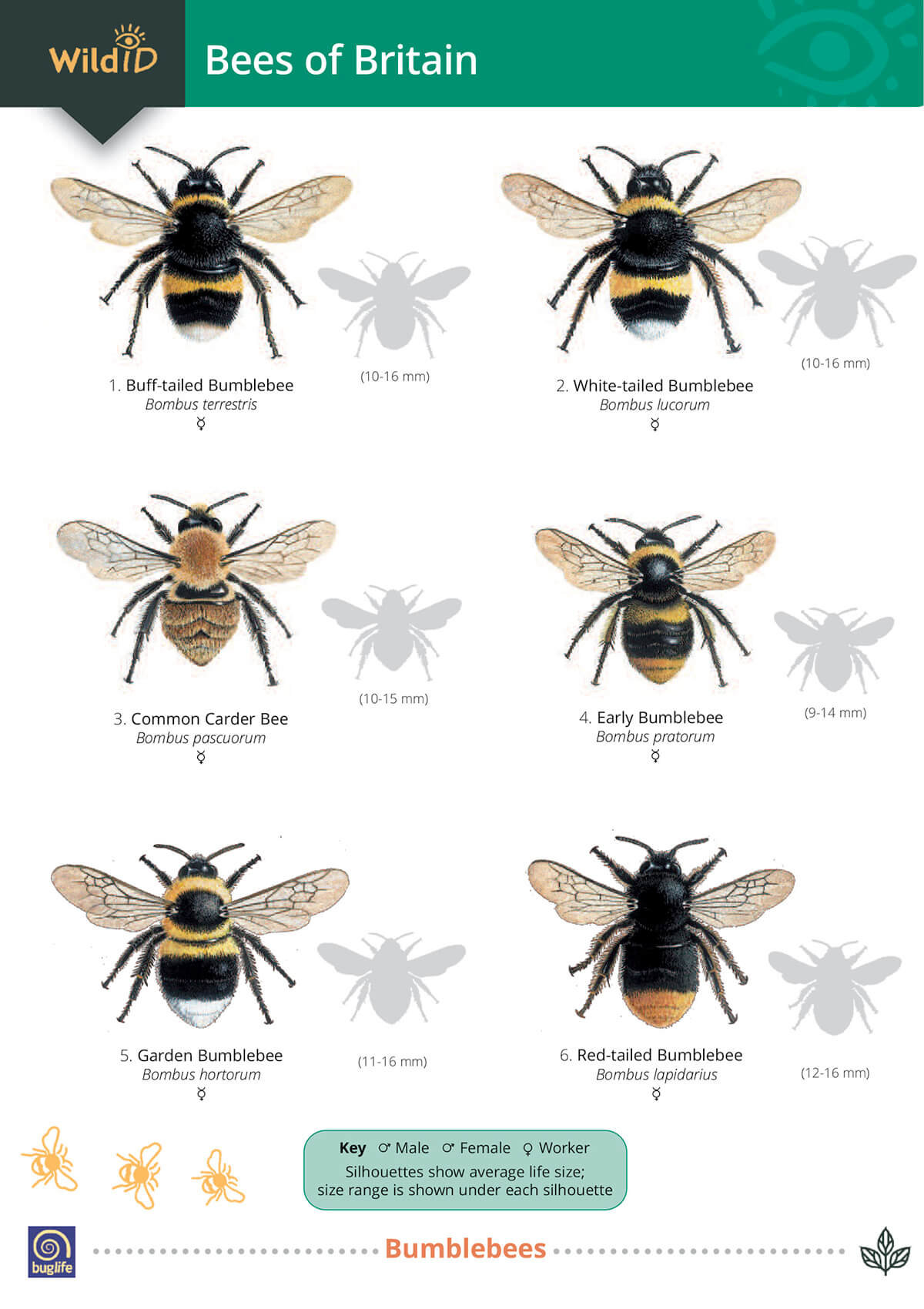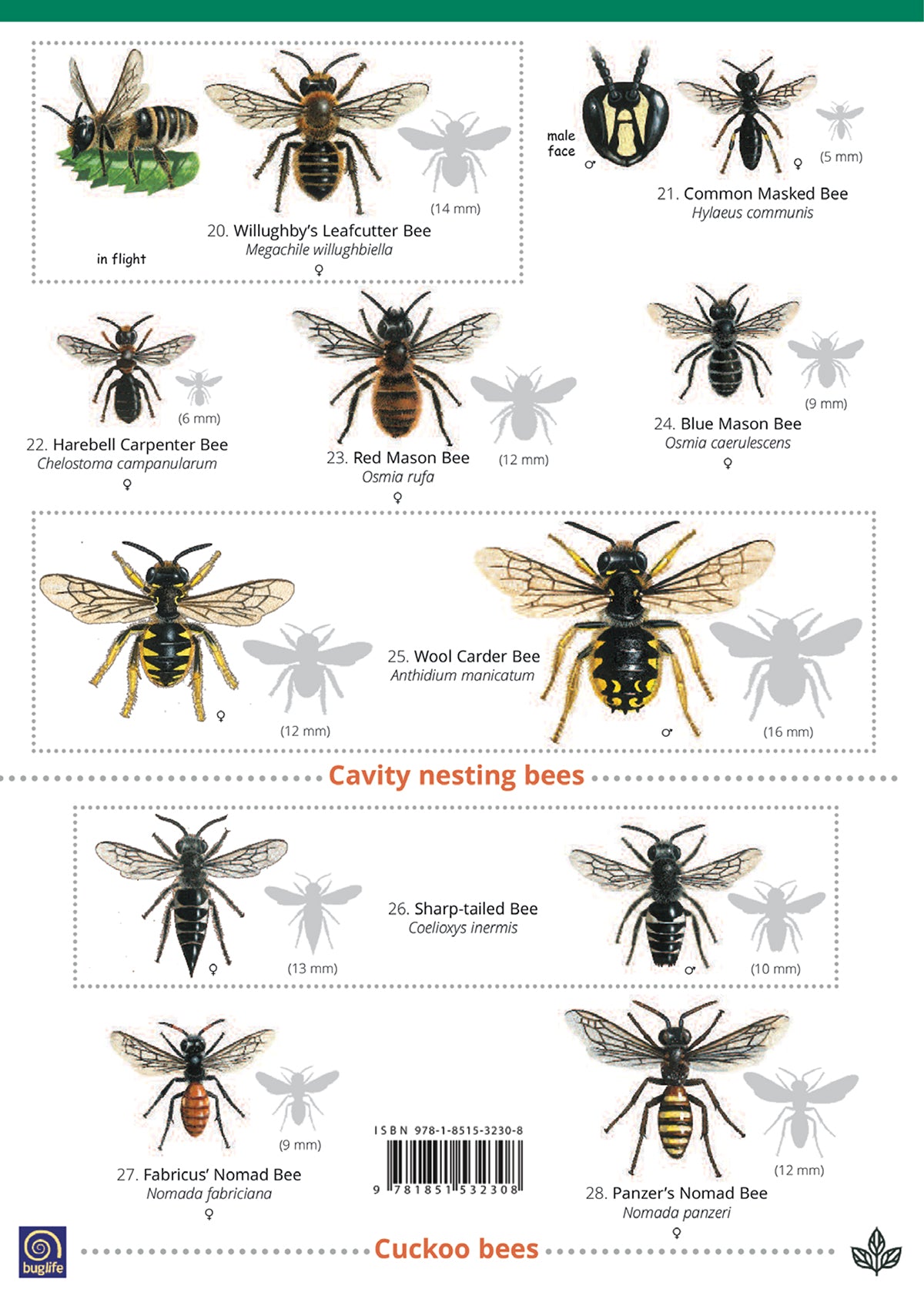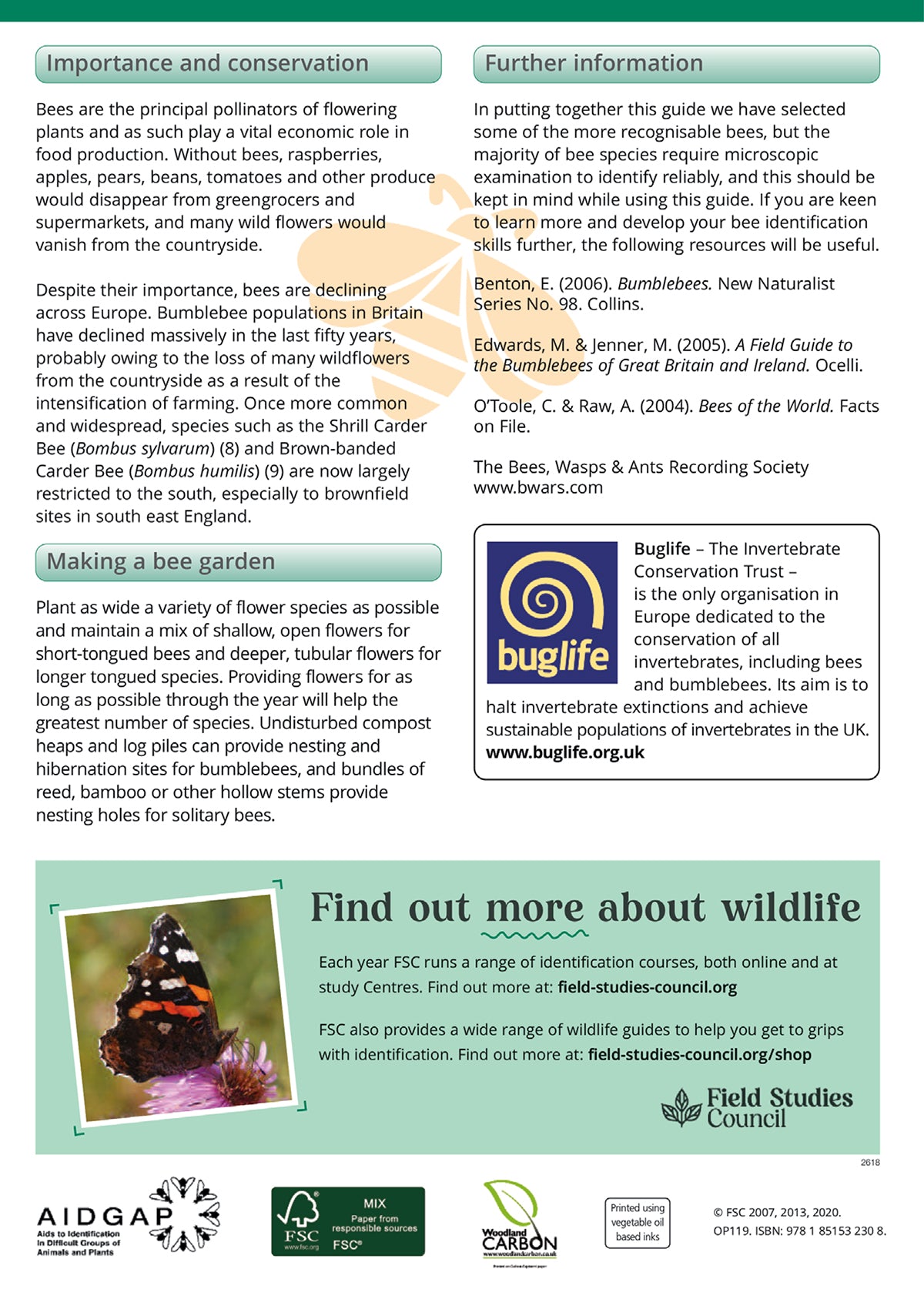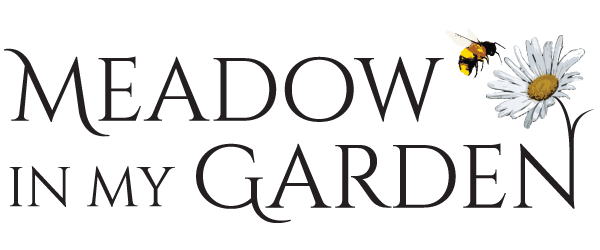Meadow in My Garden
Bees of Britain
Bees of Britain
Couldn't load pickup availability
Splashproof 8-panel fold-out field guide
Can be wiped clean
Robust when working outdoors
Rucksack sized - 24.5cm x 17.5cm
This 8-page chart shows 28 species of bee, most of which can commonly be seen flying in domestic gardens. As well as the 'Big Six' bumblebees, the chart includes representatives of mining bees, cavity-nesting bees and cuckoo bees. Each chart is laminated to make it splashproof and robust for use outdoors. Clear colour illustrations and text by experts in the subject make these valuable resources for all age groups.
Beautiful colour paintings by wildlife artist and illustrator Chris Shields highlight what to look for when identifying British bees. Plus the silhouettes next to each image show typical life size for each species.
Did you know that there are over 250 species of bees in Britain and Ireland? Bumblebees and honeybees are social bees, living in in colonies. But 90% of British species are solitary, with each nest the work of a single female. Mining bees excavate nest tunnels and cells in the ground. Cavity-nesting bees (including mason bees and leafcutters) use pre-existing cavities such as hollow plant stems, or a bee hotel. Cuckoo bees have a similar nesting strategy to the cuckoo bird. A female cuckoo bee will seek out the nest of another bee to lay her eggs. The Sharp-tailed Bee is a cuckoo bee frequent in gardens.
You can easily increase the number of bee species in your garden. Plant a mix of shallow open flowers for short-tongued bees and deeper tubular flowers for long-tongued species. Providing flowers for as long as possible through the year from early spring to late autumn will help the greatest number of bees. Undisturbed compost heaps and log piles are useful nesting and hibernation sites for bumblebees.
The Field Studies Council guide to British bees was co-created with Buglife.
